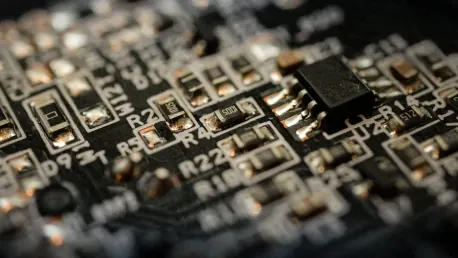The future of cybersecurity is on the brink of a revolutionary shift as quantum computing technologies advance. By 2025, the landscape of cybersecurity will be significantly influenced by these breakthroughs, necessitating a transition to post-quantum cryptography (PQC) and other quantum-enhanced security measures. This article delves into the anticipated changes, expert predictions, and strategic recommendations for businesses to prepare for the quantum era.
The Quantum Threat to Current Encryption Standards
The Rise of Quantum Computing
Quantum computing is progressing steadily, with significant advancements expected in quantum hardware, error correction, and algorithm development. Experts predict that fully fault-tolerant quantum computers capable of decrypting classical encryption might be a decade away. However, the urgency to prepare is palpable, as conventional asymmetric cryptography could become unsafe by 2029. Advances in quantum technologies threaten to render many of today’s encryption methods obsolete, necessitating a proactive approach.
Organizations must monitor technical milestones closely and prioritize migration to PQC to preempt potential breaches by quantum-capable adversaries. Duncan Jones from Quantinuum underscores that the industry’s growing focus on preparedness can be attributed to emerging quantum threats. With Gartner’s prediction suggesting a potential timeline where conventional cryptography may no longer be safe, it’s essential to stay ahead of these developments. The need for robust security mechanisms becomes more critical as the quantum era approaches, highlighting an urgent need for a strategic shift towards PQC.
Predictions and Technological Advancements
By 2025, major trends in quantum computing will include hardware improvements, advancements in error correction, and the practical adoption of quantum key distribution (QKD) and quantum random number generation (QRNG). Companies like Quantinuum have accelerated their roadmaps for fully operational fault-tolerant quantum computing to 2030. These advancements in quantum technology underscore the increasing relevance of transitioning to quantum-secure solutions. For example, the Hudson Institute’s prediction of a potential GDP loss of up to $3.3 trillion if the Federal Reserve’s systems are compromised highlights the dire consequences of not adopting quantum-safe measures.
The progression of quantum technologies unmistakably signals the profound impacts these technologies will have. The potential macroeconomic consequences of quantum cyberattacks are driving concerns and accelerating the need for quantum-safe solutions. Reports such as those from the Hudson Institute serve as grim reminders of the high stakes involved, prompting businesses to consider swift migration strategies. This necessitates greater investments in quantum-safe protocols and an emphasis on building resilient and adaptive security frameworks to mitigate potential vulnerabilities.
The Urgency for Quantum-Safe Cryptographic Solutions
Escalating Cybersecurity Challenges
The urgency to resolve cybersecurity challenges is escalating, propelling the adoption of quantum-safe cryptographic solutions like QKD and advanced post-quantum algorithms. Experts forecast accelerated advancements in quantum networking to safeguard critical infrastructure and communications. As nation-state cyber threats and geopolitical tensions rise, maintaining cryptographic resilience is becoming a central business requirement. Florian Neukart from Terra Quantum highlights the crucial need for adopting these solutions, underscoring the continuous evolution of quantum-enhanced technologies.
Adapting to these cybersecurity threats means integrating advanced quantum-safe cryptographic solutions to maintain the integrity and confidentiality of critical data. The projected rise in nation-state cyber threats elevates the importance of robust cryptographic frameworks. This evolving landscape demands continuous upgrades to existing security measures, integrating hybrid solutions that can seamlessly adapt to future quantum threats. Thus, businesses must take proactive steps in aligning their security practices with emerging quantum advancements.
Strategic Planning for Cryptographic Resilience
Organizations must develop multifaceted, adaptable cryptographic strategies that can swiftly respond to emerging threats. Transitioning to quantum-resistant encryption requires careful strategic planning to balance security needs and compliance requirements. Enterprises need to understand that this transition involves comprehending critical data assets and establishing hybrid protections integrating PQC with conventional cryptographic methods. Michele Mosca from EvolutionQ emphasizes that maintaining cryptographic resilience calls for a strategy that encompasses flexibility and adaptability.
Cryptographic resilience is not merely about technological upgrades; it’s about dynamic strategies that safeguard against evolving threats. The transition to quantum-resistant encryption requires meticulous planning, taking into account both security needs and regulatory landscapes. Enterprises must map out their critical data, ensuring that hybrid solutions combining classical and quantum-safe protocols are effectively employed. This dual approach helps create a secure environment resilient to both current and future threats, ensuring seamless adaptation in an ever-changing cybersecurity ecosystem.
The Shift from Discovery to Deployment
Finalization of NIST’s PQC Standards
With the finalization of NIST’s PQC standards in mid-2024, businesses are beginning to grasp the compliance landscape. The shift to PQC involves understanding critical data assets and establishing hybrid protections integrating PQC with conventional cryptographic methods. Enterprises are moving from discovery to deployment of post-quantum cryptography, ensuring they are prepared for the quantum era. Ben Packman of PQShield underscores the importance of transitioning to post-quantum cryptographic measures as businesses begin to navigate these new standards.
The finalization of these standards represents a major milestone for quantum-safe cryptography, creating a clear pathway for organizations to follow. However, understanding and implementing these standards requires a detailed analysis of current data assets and potential vulnerabilities. The shift involves not just technological integration, but also an organizational commitment to safeguarding sensitive information, emphasizing both compliance with new protocols and readiness for the impending quantum age.
Importance of Crypto-Agility
Crypto-agility is vital as emerging PQC standards evolve. Updates to TLS and SSH protocols to align with NIST’s new standards are ongoing, and continual advancements mean organizations need agile cryptographic solutions to stay ahead. Establishing crypto centers of excellence is a growing trend among enterprises to support this agility and readiness against quantum threats. Todd Moore of Thales discusses the critical nature of crypto-agility, highlighting the need for continuous evolution in cryptographic practices to maintain a proactive stance against quantum threats.
The dynamic nature of quantum threat predictions necessitates agile cryptographic solutions that can evolve alongside technological advancements. Crypto-agility ensures that organizations remain flexible, adapting to new protocols and integrations as they emerge. Establishing centers of excellence can significantly enhance an organization’s response capabilities, ensuring they remain at the forefront of cryptographic technologies. This proactive approach underlines the importance of agility and resilience in safeguarding against sophisticated quantum threats.
Proactive Strategies for Quantum Cybersecurity
Migration to PQC
The quantum cybersecurity landscape requires proactive strategies focusing on PQC migration. Organizations must invest in robust cryptographic foundations using QRNG and agile defense systems capable of adapting as quantum technologies evolve. Immediate actions to secure critical data are essential, emphasizing the need for businesses to stay informed, plan carefully, and invest in nascent but promising quantum-safe technologies. Quantum cybersecurity strategies must be thorough, covering both immediate threats and long-term resilience against future quantum capabilities.
Securing data in the quantum era demands a robust, multi-layered approach to cryptography. Organizations should not only invest in PQC but also consider integrating technologies like QRNG to enhance security further. Experts emphasize the importance of staying ahead by being informed, planning strategically, and investing in technologies that can withstand the rapid advancements in quantum computing. This proactive mindset enables businesses to build strong defenses that will protect their critical assets both now and in the foreseeable quantum future.
Expert Recommendations
The future of cybersecurity stands on the threshold of a groundbreaking transformation with the advancement of quantum computing technologies. By the year 2025, these innovations are expected to profoundly reshape the cybersecurity landscape, driving the need for a shift to post-quantum cryptography (PQC) and the implementation of other quantum-enhanced security measures. This transition will be critical in maintaining robust protection against increasingly sophisticated threats posed by quantum computing’s capabilities.
Experts forecast a wide array of changes and challenges that organizations must prepare for to survive and thrive in this upcoming era. Businesses will need to adopt new strategies and embrace innovative technologies to safeguard their data and systems effectively. This article explores these anticipated changes in depth, providing expert predictions and strategic recommendations for companies. Adapting to the quantum era means not only understanding the technological shifts but also preparing proactive countermeasures to stay ahead in this rapidly evolving field.









